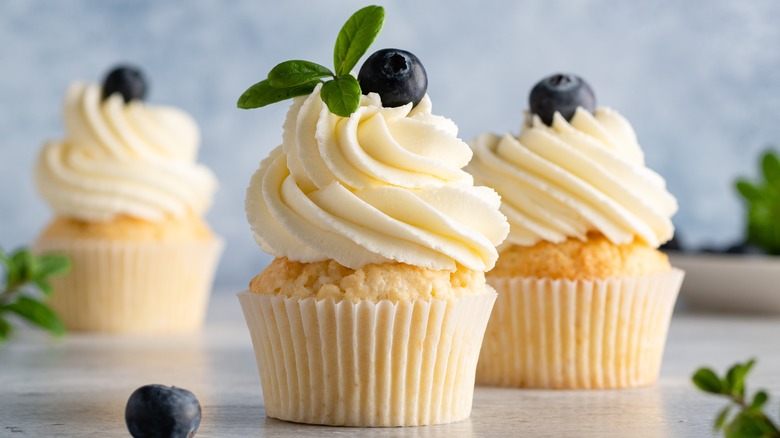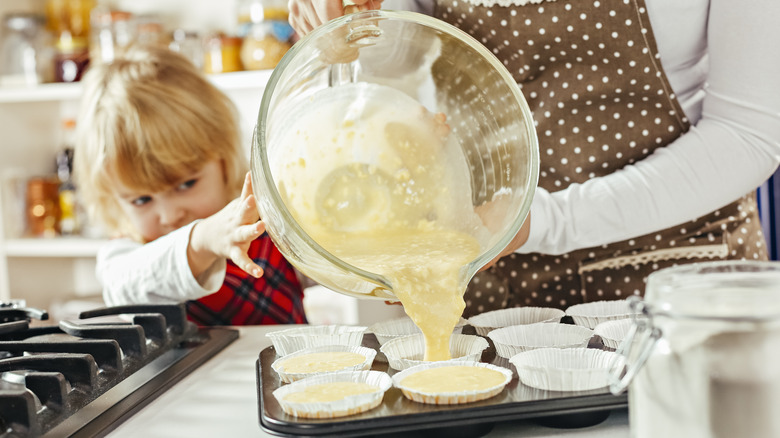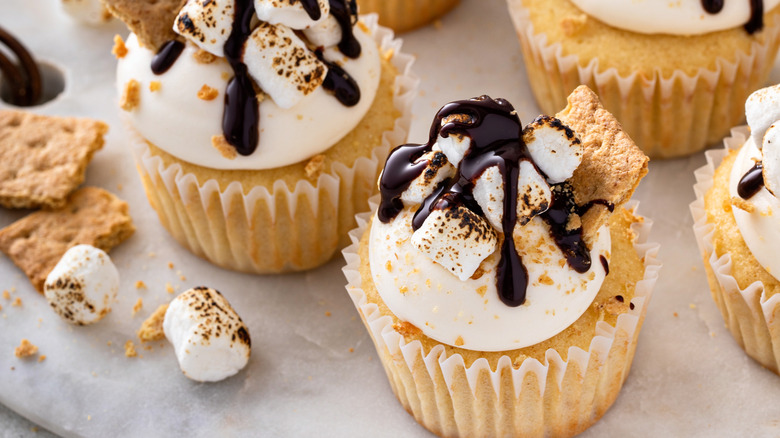How To Properly Transform Your Cake Batter Into Fluffy Cupcakes
Have you ever been tempted to turn your favorite cake batter into adorable, individually portioned cupcakes? Well, you're not alone. It's an excellent idea and, with a few careful considerations, a straightforward process. Cupcakes are essentially mini versions of cakes, and most cake batters can be easily converted into cupcakes. The critical aspect to keep in mind is the baking time; cupcakes will cook much faster than a full cake due to their smaller size. But the difference in baking time isn't the only factor to consider. The journey towards fluffy, moist cupcakes hinges on how you handle and portion the batter. Additionally, the temperature at which you bake these miniature delights plays a significant role.
Given their petite size, cupcakes bake more rapidly than an entire cake, demanding adjustments to the baking time. The temperature setting is also paramount. Interestingly, cupcakes typically necessitate the same or marginally reduced temperatures compared to cakes to facilitate uniform baking while avoiding undue dryness. Moreover, over-mixing the batter could yield dense cupcakes rather than the sought-after airy ones. The solution is simple: Blend until the ingredients are just combined. Overfilling the muffin cups, on the other hand, can lead to messy overflows and ill-shaped cupcakes. A useful guideline is to fill only about two-thirds of the liner.
As you embark on this fun-filled transformation, remember that it's the small details that will lead you to cupcake success.
How to transform cake batter into fluffy cupcakes
The first thing you need to do when making cupcakes is select the appropriate cake recipe. Once you've made your choice, prepare the batter as usual, mixing it until it's just smooth to maintain a light, fluffy texture.
Once the batter is ready, it's time to prepare your baking vessel. Muffin pans are perfect for this job. Line the muffin cups with paper or silicone cupcake liners to prevent sticking and to make the cupcakes easier to remove once baked. Next, distribute the batter evenly among the liners. Aim to fill each about two-thirds of the way to leave room for the cupcakes to rise without overflowing.
The final steps in the process involve baking and cooling the cupcakes. Place the filled muffin pan in a preheated oven and bake according to the recipe's suggested temperature. However, because cupcakes are smaller than a typical cake, they will bake quicker, usually around 15–20 minutes. So keep an eye on them to avoid over-baking. Once a toothpick inserted into the middle of a cupcake comes out clean, it's done. Allow them to cool in the pan for a few minutes, then transfer them to a wire rack to cool completely. Voila — your cake batter has been transformed into delicious cupcakes.
The magic of leavening agents in achieving fluffy cupcakes
Want to know the secret behind fluffy cupcakes? It's all about the power of leavening agents. Baking powder and baking soda are the star players that can help cupcakes reach new heights of fluffiness. These leavening agents produce tiny gas bubbles in the batter. Once in the oven, these bubbles expand, making cupcakes rise and become light and fluffy. But you need to strike a careful balance. Too little of it can make cupcakes heavy and dense, while too much might make them taste a bit off or even spill over the pan.
Another neat thing about leavening agents is that they can influence cupcakes' color and taste. For example, baking soda can help cupcakes turn a lovely golden brown. But if you use too much, it might leave an unpleasant, soapy taste. Baking powder, which combines baking soda and an acid, gives a neutral flavor but may not provide as much browning.
When you're turning cake batter into cupcake batter, take a moment to consider your leavening agents. Adjusting them to suit the amount of batter and the outcome you're aiming for is a little detail that can make a big difference.


